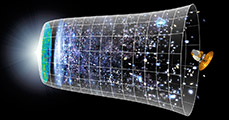My aim with this Basic Questions blog is to encourage people to think “scientifically” and to ask the “right” questions. If you don’t ask the “right questions” then you can’t hope to come up with meaningful, dependable answers.
This applies to all walks of life. There are some issues such as the debate on AGW (anthropogenic global warming) where confusion and misinformation abounds, as highlighted for example by a recent post of mine A little bit of Carbon Dioxide? (the claim that only 3.4% of carbon dioxide, which is only 3.62% of greenhouse gases, is caused by human activity).
Let’s look at another claim by Burt Rutan (referring again to his PDF and this PowerPoint presentations). At slide 16 of the latter, he talks about dishonest presentation of information, such as the now famous (or perhaps infamous) “hockey stick” claims about global warming:
And at slide 16 he decries what he says is “data manipulation” – the apparent sleight-of-hand in doing away with the medieval warm period -- by the United Nation’s intergovernmental panel on climate change (IPCC):
And so on. There are so very many presentations available that you are likely to lose your way in the overabundance of pretty charts and different data “interpretations” or whatever you want to call them.
Apart from Rutan’s, and as just one other example, try battling your way through some of the presentations by The Global Carbon Project (GCP) such as The Carbon Budget 2007+ presented at CLIMATE CHANGE - Global Risks, Challenges & Decisions (Copenhagen, 10-12 March 2009).
UPDATE: Bill McKibben of 350.org says in Dissecting the sceptics (2) that "Very few people really want to change in any meaningful way, and given half a chance to think they don’t need to, they’ll take it" and “at bottom, that’s a battle as much about courage and hope as about data.”Who’s “right” and who’s “wrong” about all this complicated stuff, if it can be put so simplistically? There’s dissension among even the climate science specialists, so how can non-specialists make sense of it all and come to logical conclusions about what can be done (if anything) to modify the climate changes?
There’s little doubt that there has been some warming during the last several decades, but my question this time is:
How significant is the present global warming trend in the very-long-term picture of global climate change?
What I’m getting at here is, if we try to estimate what has happened to the climate going back not just a few hundred years (such as the medieval period), but many thousands and even many millions of years, then what picture emerges (and how reliable is it)? It has been a lot hotter at times long ago (such as when there were green forests in what we now call Antarctica), as well as much colder during various ices ages.
Are the current temperature fluctuations, in comparison with with the totality of changes over the eons, like just the rattle on the rattlesnake’s tail?

Imagine that the snake represents climate changes
going way back in time, and we’re positioned
at the very tip of the rattle
Are we focussing too much on the rattle, warning sign though it is, rather than on the picture that emerges if we stand right back and look over the entire rattlesnake?
Is the tiny part of the historical global temperature graph just a “pimple on a pumpkin” and nothing more than a tiny squiggle at the very end of a curve that has had many ups and downs, some of them perhaps much larger than current variations?
I’m not sure, are you? What can and should we do, if anything, to avoid the rattlesnake’s bite?



